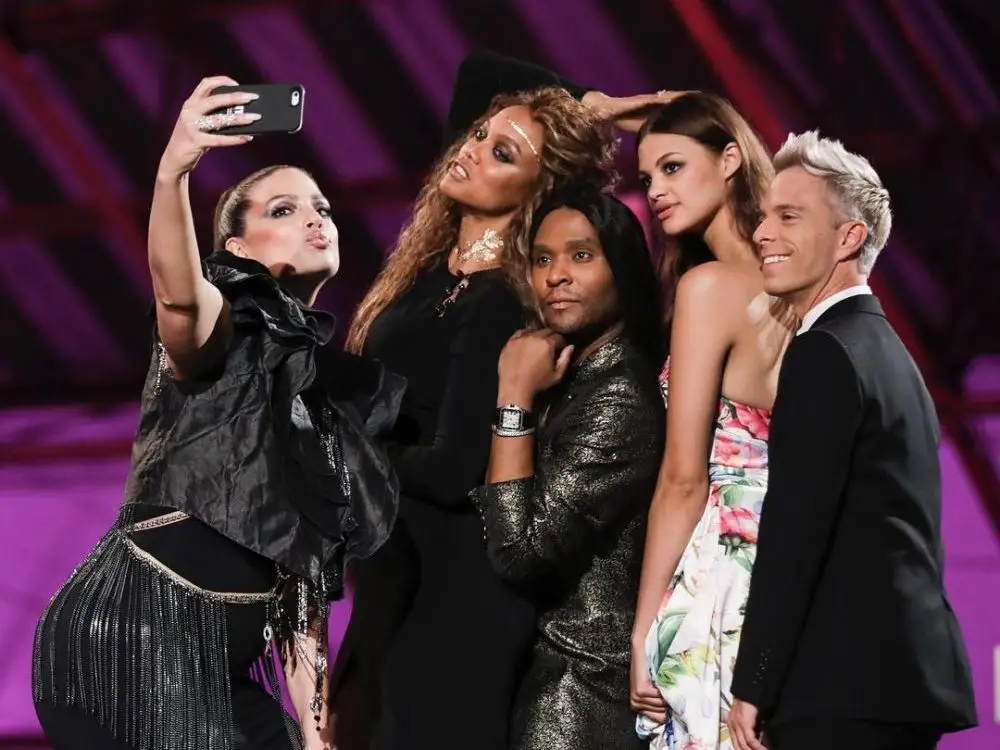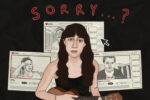“America’s Next Top Model” used to represent a form of simplicity to me. I watched marathons of it on summer afternoons eating bowl after bowl of my mom’s homemade chicken tortilla soup. It was a thrilling mess of tears, dramatics and ridiculous challenges, each episode building toward the deliverance of the speech that has become emblematic of my growing up in the 2000s.
“Two beautiful young ladies stand before me, but I only have one photo in my hands. And this photo represents the girl that is still in the running to become America’s Next Top Model,” Tyra Banks says.
The two young women stand in front of Tyra, often in tears as they fear losing their grip on the lifeline that has been extended to them by Tyra herself. A way out of their own lives. And I have to admit that I used to laugh at those girls. How could those wanna-be models believe in a TV show more than themselves?
A fraudulent process only proven to work by Tyra herself, as she yelled at girls for not caring enough, not wanting it enough, not listening enough. But at 9 years old, when the true weight of internalized misogyny instilled by the media was not yet understood, what Tyra said felt like the truth. She explains to those wide-eyed 20-year-olds that this is how the world works; her word is gold.
But then I turned 20 myself. One hazy summer, I decided to re-watch “America’s Next Top Model” for nostalgia’s sake, and was struck by how inaccurately I remembered everything. Once dubious and ridiculous actions of adult women transformed into dark and familiar elements of myself. Poor decisions that occur when lost in the complexity of womanhood. Then I realized something painfully simple: Those girls weren’t stupid; they were just 20 years old.
Twenty used to be this mythical age that I could never envision for myself. So, those girls on “America’s Next Top Model” became my favorite window into adulthood, not fully understanding the way in which the show constantly forced the contestants into uncomfortable and potentially triggering situations meant to exemplify their hunger for being a top model. Young women were encouraged to share their stories of trauma as they posed in their bikinis during casting week.
“So I understand something happened to you as a little girl,” Tyra will usually say. “Tell us what happened.” As the contestant tells her story of rape, molestation or abuse, Tyra will nod stoically, saying something sympathetic, and the scene ends.
As reality television is still an evolving genre, reality shows from the early 2000s possess an aspect of lawlessness in lieu of the social responsibility that is now sought after. Holistically, reality television relies on embarrassing and exploiting people — particularly women of color, who are often depicted as hypersexual, uneducated and angry. “America’s Next Top Model” premiered in May of 2003, and has since carried a long history of transphobic, racist and homophobic content. Blackface was a common trope within photo shoots, along with other racist feedback given to models as if it were fundamental to the world of fashion.
In Cycle 7, released in 2006, Jaeda was forced to kiss a racist male model after he tells her he doesn’t “like” Black girls. She is told to suck it up, only to be eliminated later in the episode. In 2004’s Cycle 3, 21-year-old YaYa is told by the judges that her “‘African-ness’ is too overbearing” for mainstream fashion. Cycle 6 winner Danielle was mocked by Tyra for the gap in her teeth and the way she spoke.
Just hours after learning of the tragic death of a childhood friend during Cycle 4, 20-year-old Kahlen is “coincidentally” required to pose in a grave, representing one of the seven deadly sins. During Cycle 17, (alleged) winner Angelea was disqualified because she had previously worked as a legal escort. This was a detail the producers of the show knew about, allowing her on the show only to disqualify her after the finale. The show’s finale was then re-shot and Angelea was never mentioned again.
In an interview with the Daily Mail, Angelea said, “They preach to girls you can come from anywhere and you can be successful, but that’s not true. Look at what happened to me. Girls like me don’t have a chance. I rectified my situation but I’m still paying for it.”
These moments have now taken the form of memes that have gone viral, sparking widespread discussions regarding the problematic and controversial history of the show. Tyra has since apologized for certain comments, but this has not done much to quell the backlash. As quarantine subsequently resulted in mass amounts of binge watching, the internet has continued to unearth the obscure and offensive moments of the series, particularly on Twitter, questioning the ethics of the show overall.
In May, Jay Manuel, the creative director of “America’s Next Top Model,” and the show’s runway coach, J. Alexander, began “Jay’s Chat,” in which the two discuss each season of “America’s Next Top Model” along with interviews of people who were previously on the show. Audience members can ask questions while catching up with their favorite contestants.
“Jay’s Chat” toys with a necessary form of accountability, as Manuel discusses the racist elements of “America’s Next Top Model,” particularly his disapproval of the show’s use of blackface, and the Eurocentric beauty standards and whitewashing that occurs within the fashion industry. Manuel maintains his respect for Tyra as well, stating “I can’t take away what she really did represent in our industry.” Tyra was the first Black woman to be on the cover of GQ and Sports Illustrated. She was also the first Black woman to be featured on the cover of the catalog for Victoria’s Secret.
Some have criticized “Jay’s Chat” for not engaging with deeper conversations, and instead simply skimming the surface of the harmful past of “America’s Next Top Model” and functioning as a lukewarm self-promotion for Manuel’s current projects. This has led to other contestants posting their own Instagram Live streams to share their experiences with the show. During her own Instagram Live, Cycle 14 contestant Alasia discussed her experience on the program, particularly the racist and dehumanizing actions of the white contestants who consistently referred to the Black girls in the house as aggressive and uneducated. Alasia has also been vocal in her support of Angelea and how unfairly the show portrayed them both.
Although “Jay’s Chat” does not heal the damage done by “America’s Next Top Model,” it does signal a necessary confrontation with the content that used to dominate mainstream media. It will always be essential to challenge the ignorance of the past, viewing it from a critical lens. As the internet continues to expose the racist habits of celebrities and influencers, so must it display the resistance against these actions.
Under the white gaze, racism is excused as simply being a remnant of the past — a manipulative tactic to maintain racist social structures. Even though “America’s Next Top Model” is only one of many examples of the abusive nature of reality television, facing its problematic history is still imperative. “Jay’s Chat” converses with both the audience and cast of “America’s Next Top Model” in a way that cements the importance of accountability within the media, along with what that accountability should truly look and feel like as we move forward.
















